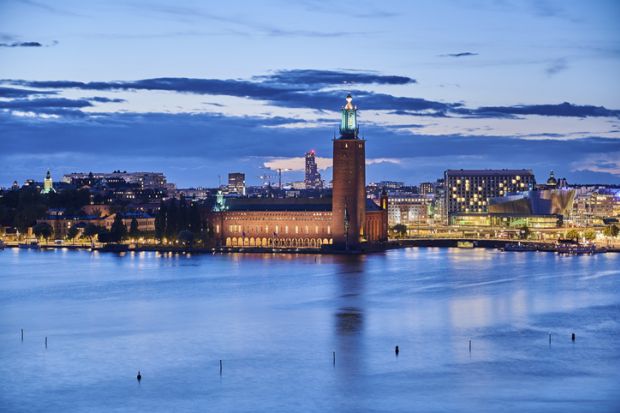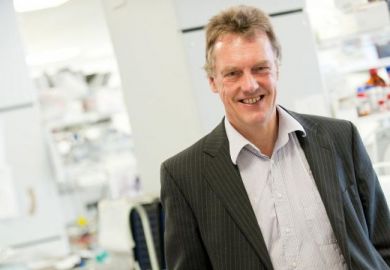When Peter Agre won the Nobel Prize in Chemistry in 2003, his mother was concerned he should not “let it go to his head”.
Roald Hoffmann (chemistry, 1981) got the life-changing call from Stockholm when he was fixing his bicycle. Richard Ernst (chemistry, 1991), sleeping on a plane from Moscow to New York, was woken up by the captain and ushered into the cockpit to speak to the Nobel Committee over the radio. Roger Tsien (chemistry, 2008) was so sure he hadn’t won that he took a sleeping pill but then had to give a press conference in the middle of the night. Kary Mullis (chemistry, 1993) was warned people would be phoning him all day – and so went surfing.
Such details emerge from Nobel Life: Conversations with 24 Nobel Laureates on their Life Stories, Advice for Future Generations and What Remains to be Discovered, a forthcoming book by Stefano Sandrone, an Italian neuroscientist who is now a senior teaching fellow at Imperial College London.
Some subjects explore how early experience can shape a scientific career. In the book, Mr Mullis, who died in 2019, recalled making a rocket that blasted a frog a mile into the air. Professor Ernst built himself “a hood in the basement of the house, but it was much too small to catch all the exhaust from my experiments. Several times, I had to flee from the upper storeys to survive.”
Daniel Kahneman (economics, 2002) wasn’t sure whether he became a psychologist as “a result of my early exposure to interesting gossip, or whether my interest in gossip was an indication of a budding vocation”. It might be a good thing, he reflected, if the general standard of gossip were “more psychologically informed” because “if we anticipate intelligent gossip, we’re going to act better than if we anticipate unintelligent gossip”.
The book includes much vivid detail about the human side of science.
Françoise Barré-Sinoussi (physiology or medicine, 2008) described the depression she experienced when she “saw [HIV] patients in terrible, awful conditions, dying from the disease on which I was working…As a human being, it was a very painful experience. As a scientist, it was very stressful because I felt responsible for trying to find a solution as fast as possible. But as we know, science takes its time. There was a discrepancy between my feelings as a human being and my feelings as a scientist.”
Professor Barré-Sinoussi admitted to the kind of single-mindedness that meant her fiancé had to call her in the lab to make sure she attended their wedding celebrations. But Professor Hoffmann advised young scientists to avoid being “taken over by science” and to “take as many courses in the humanities and arts, and in foreign languages, as you can”, so as to “develop an appreciation for the moral, social and artistic aspects of our life. Chemistry is easy; being human is not.”
Professor Tsien, who died in 2016, suggested that “it’s important in science to pick projects that give one some sensual pleasure, which in my case means pretty – even gaudy – colours. In my first successful science experiments, calcium imaging, the rainbow of computer pseudocolours, representing low to high calcium concentrations, was motivated by my aesthetic preferences. The compulsion to fill the spectrum of fluorescent proteins from violet to infrared came from the same place.”
For Sir Tim Hunt (physiology or medicine, 2001), the key to success was “finding a problem that’s both interesting and soluble”. Science, he suggested, was “like walking into a foggy landscape. You can’t make anything out clearly. When the fog lifts, you can see a tree here and a bush there, and it becomes obvious which way to go. But the fog always descends again. It’s about this moment of clarity that is treasurable, and it comes along every, let’s say, 10 years or something like that.”
Even Professor Agre’s mother was eventually impressed by his achievements.
His research into aquaporins was used by Christian Dior to develop a new skincare product, advertised in a French beauty magazine with a picture of “a beautiful blonde young woman with water dripping on her cheek”. When he showed the photograph to his mother, she smiled and said: “Peter, I think you are finally doing something useful!”
Register to continue
Why register?
- Registration is free and only takes a moment
- Once registered, you can read 3 articles a month
- Sign up for our newsletter
Subscribe
Or subscribe for unlimited access to:
- Unlimited access to news, views, insights & reviews
- Digital editions
- Digital access to THE’s university and college rankings analysis
Already registered or a current subscriber? Login








